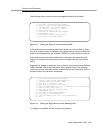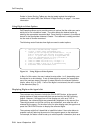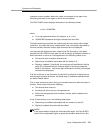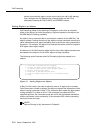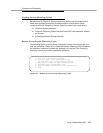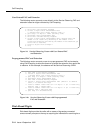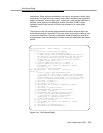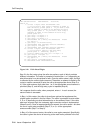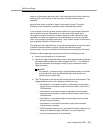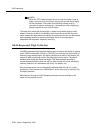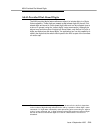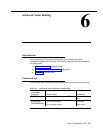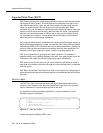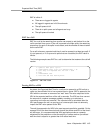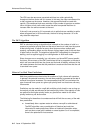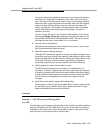
Dial-Ahead Digits
Issue 4 September 1995
5-17
vector or of terminating the phone call. If the caller selects the former option (by
entering
9
), the call is routed to the first vector, and the entire process is
repeated.
Note the third vector is similar in design to the second vector. The major
difference is the information provided and the requested digit entries.
In our example, we have just seen that the caller has to go through at least two
sets of options to get the information he or she wants. Each option set is
introduced by an announcement. However, because of the “dial-ahead” digit
capability, the caller can bypass the announcements if he or she so chooses.
Thus, in our example, the caller could enter
1
and
5
within a matter of seconds to
hear yesterday’s Southern Division scores.
The caller may enter digits while he or she is being queued for an announcement
or while the announcement is playing. If digits are entered during an
announcement, the announcement is disconnected or removed from the queue.
Collection of dial-ahead digits continues until one of the following occurs:
■ Vector processing stops or is terminated.
■ Sum of the digits collected for the current
collect digits
command plus the
dial-ahead digits exceeds the switch storage limit of 24. Any additional
digits are discarded until storage is freed up by a subsequent
collect
digits
command.
NOTE:
Any asterisk (*) and pound sign (#) digits dialed ahead count toward
the 24 digit limit, as do any dial-ahead digits entered after the
asterisk or pound sign digit.
■ The TTR required by the user to collect digits has been disconnected. This
happens whenever one of the following conditions is true:
— Successful or unsuccessful
route-to number
step is encountered
during vector processing,
except
where the number routed to is a
VDN extension.
— Successful or unsuccessful
route-to digits
step is encountered
during vector processing, except where the number routed to is a
VDN extension.
— Successful or unsuccessful
adjunct routing
step is encountered
during vector processing.
— Successful or unsuccessful
converse-on
step is encountered
during vector processing.
— Call Prompting timeout occurs, during which time the caller has not
dialed any additional digits, asterisks (*) or pound signs (#).
— Vector processing stops or is terminated.



